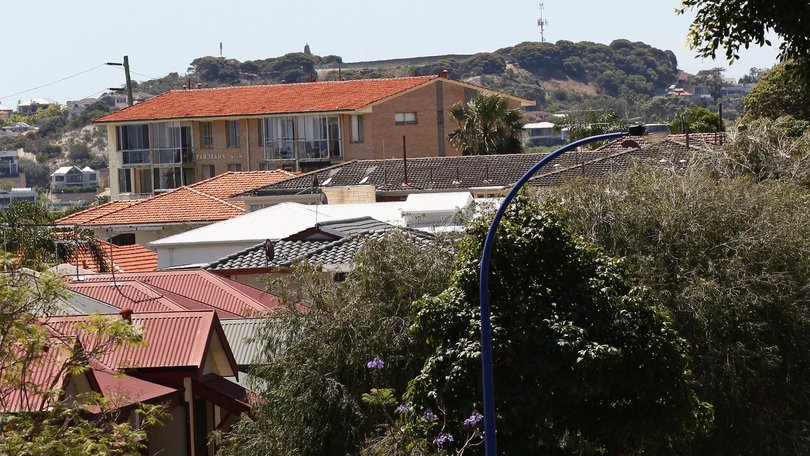Some borrowers may run out of savings by the end of 2025 as cost-of-living squeeze continues, RBA says

Many borrowers feeling the pinch from cost-of-living pressures will feel under financial siege for much of this year, the Reserve Bank expects, with relief for many people unlikely until late next year — and some may run out of savings by the end of 2025 if rates stay high.
The central bank on Friday detailed expectations that the financial good times many experienced during the pandemic, when interest rates hit ultra-low levels, are unlikely to return. The share of borrowers with a cash-flow shortfall due to higher expenses would still remain higher than during the pandemic.
In its latest biannual review of the nation’s financial stability, experts at the bank stated most mortgage-holders have faced a spike of between 30 and 60 per cent in their minimum scheduled repayments since the cash rate started moving again in May 2022.
Sign up to The Nightly's newsletters.
Get the first look at the digital newspaper, curated daily stories and breaking headlines delivered to your inbox.
By continuing you agree to our Terms and Privacy Policy.Since then, the RBA has moved rates from 0.1 per cent to 4.35 per cent, which has forced repayments up $1210 per month for those with a $500,000 loan, $1815 per month on a $750,000 loan and $2420 on a $1 million loan, according to comparison site RateCity.
The report comes just days after RBA governor Michele Bullock, in keeping rates on hold, said the bank was not ruling anything in or out due to the uncertain economic outlook. Since then, the US Federal Reserve, the Bank of England and the European Central Bank have left their rates on hold with some suggestion the Fed may start cuts in June. This is important to Australia because of the Fed’s global influence.
“Much of this year will remain challenging for borrowers already under pressure,” the RBA’s Financial Stability Report states, which adds that overall the financial system and many households and businesses remain resilient. Global threats are the most present, not domestic.
The widely forecast 0.5 percentage point jump in the unemployment rate would push most affected borrowers into a cash-flow shortfall, the RBA said, but this would not necessarily mean mortgage defaults.
It estimates nearly 45 per cent of households with variable-rate owner-occupier loans have less than three months of savings they could use to cover scheduled repayments if they lost their jobs, while 20 per cent have more than two years worth.
The RBA noted loan arrears overall are still low, at less than one per cent, with many drawing down on savings buffers before falling behind on repayments. But even among the highly leveraged borrowers, arrears are less than 2 per cent.
“Most borrowers remain able to service their debts and cover essential costs out of their income, despite their budgets being squeezed by higher interest rates and inflation,” the RBA stated.
“However, around 5 per cent of variable-rate owner-occupier borrowers are estimated to have had expenses exceed their income as interest rates and prices have risen over recent years, leading to an estimated cash flow shortfall.”
Even if interest rates rose by another 0.5 percentage points — pushing the cash rate to 4.85 per cent, a 16-year high, most borrowers would have enough cash to meet their mortgage repayments and other essential spending, the RBA estimated in what’s known as scenario modelling.
The share of borrowers more at risk of falling behind on repayments has increased over the past two years but is still less than 2 per cent.
“Looking ahead, nearly all borrowers are expected to be able to continue servicing their debts even if budget pressures remain elevated for an extended period.”
The RBA also struck a more positive tone on the beleaguered construction industry. While acknowledging company insolvencies had risen, they were still below levels seen pre-pandemic. Many of the insolvencies are in construction but conditions were beginning to stabilise, the RBA said.
“Some residential builders have been able to rebuild margins, following a challenging period where profit margins on fixed-price contracts were severely affected by input costs that were sharply rising as well as costly delays,” the report says.
“Sectors more exposed to consumer discretionary spending, such as hospitality, have accounted for an increasing share of insolvencies of late.”
Challenging conditions for households mean some businesses are finding it harder to pass on their higher costs they face, the RBA said, with some retailers and hospitality businesses struggling with profitability.
Still, the RBA does not expect broad-based corporate financial stress, as though demand growth has slowed, the level of demand is still relatively high and business balance sheets are generally strong.
The major risks to Australia’s financial stability that the RBA foresees are international: further weakness in China’s property sector, conditions in global commercial real estate deteriorating further and potentially worse than expected economic outcomes as countries work for an economic soft landing.
Originally published on The Nightly
